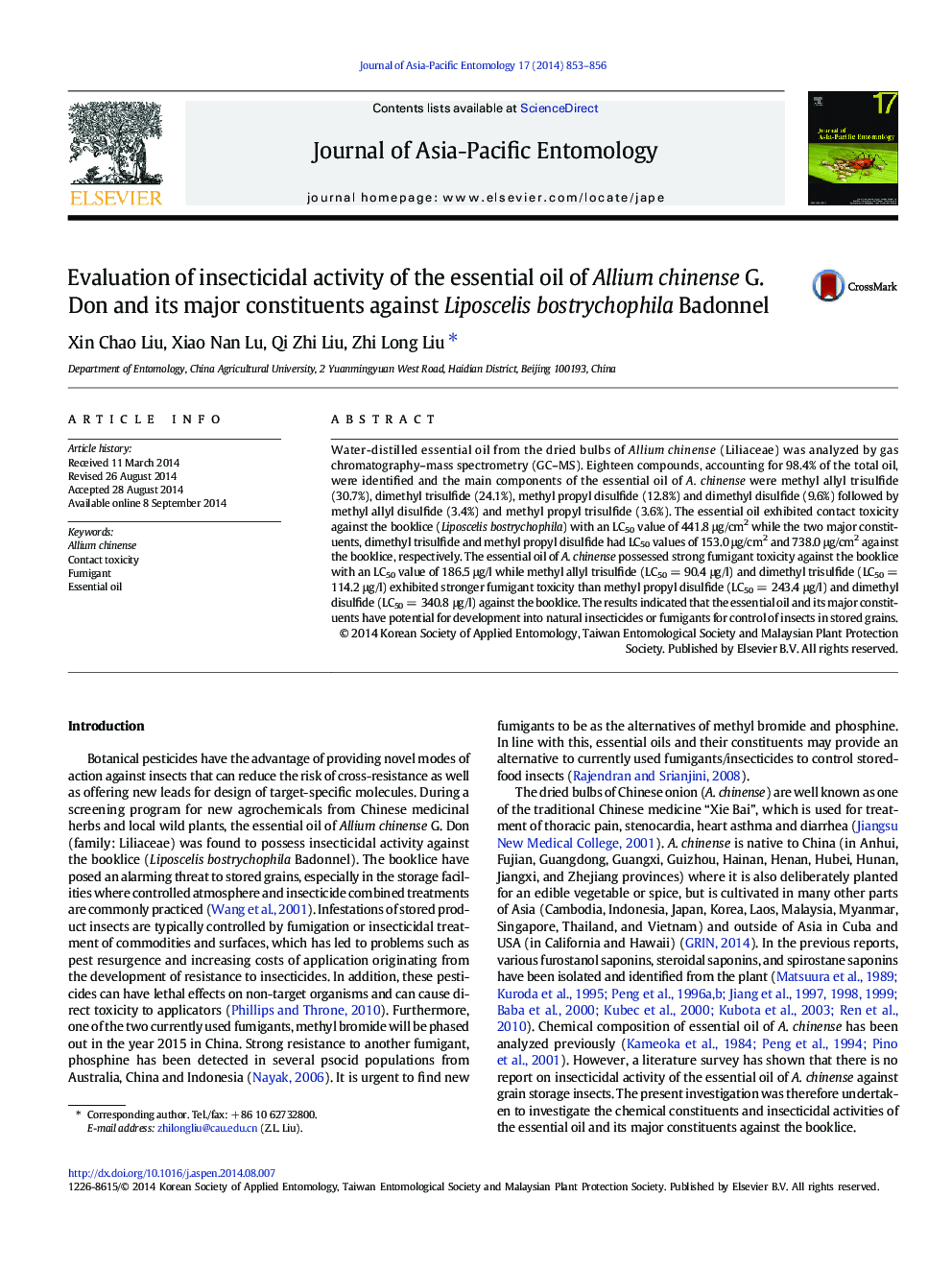| Article ID | Journal | Published Year | Pages | File Type |
|---|---|---|---|---|
| 4524550 | Journal of Asia-Pacific Entomology | 2014 | 4 Pages |
•Essential oil of Allium chinense was obtained from hydration and analyzed by GC–MS.•18 components were determined from the oil and most are s-containing compounds.•Essential oil and four constituents were evaluated for contact toxicity against the booklice.•Essential oil and four constituents were evaluated for fumigant toxicity against the booklice.
Water-distilled essential oil from the dried bulbs of Allium chinense (Liliaceae) was analyzed by gas chromatography–mass spectrometry (GC–MS). Eighteen compounds, accounting for 98.4% of the total oil, were identified and the main components of the essential oil of A. chinense were methyl allyl trisulfide (30.7%), dimethyl trisulfide (24.1%), methyl propyl disulfide (12.8%) and dimethyl disulfide (9.6%) followed by methyl allyl disulfide (3.4%) and methyl propyl trisulfide (3.6%). The essential oil exhibited contact toxicity against the booklice (Liposcelis bostrychophila) with an LC50 value of 441.8 μg/cm2 while the two major constituents, dimethyl trisulfide and methyl propyl disulfide had LC50 values of 153.0 μg/cm2 and 738.0 μg/cm2 against the booklice, respectively. The essential oil of A. chinense possessed strong fumigant toxicity against the booklice with an LC50 value of 186.5 μg/l while methyl allyl trisulfide (LC50 = 90.4 μg/l) and dimethyl trisulfide (LC50 = 114.2 μg/l) exhibited stronger fumigant toxicity than methyl propyl disulfide (LC50 = 243.4 μg/l) and dimethyl disulfide (LC50 = 340.8 μg/l) against the booklice. The results indicated that the essential oil and its major constituents have potential for development into natural insecticides or fumigants for control of insects in stored grains.
Graphical abstractFigure optionsDownload full-size imageDownload as PowerPoint slide
